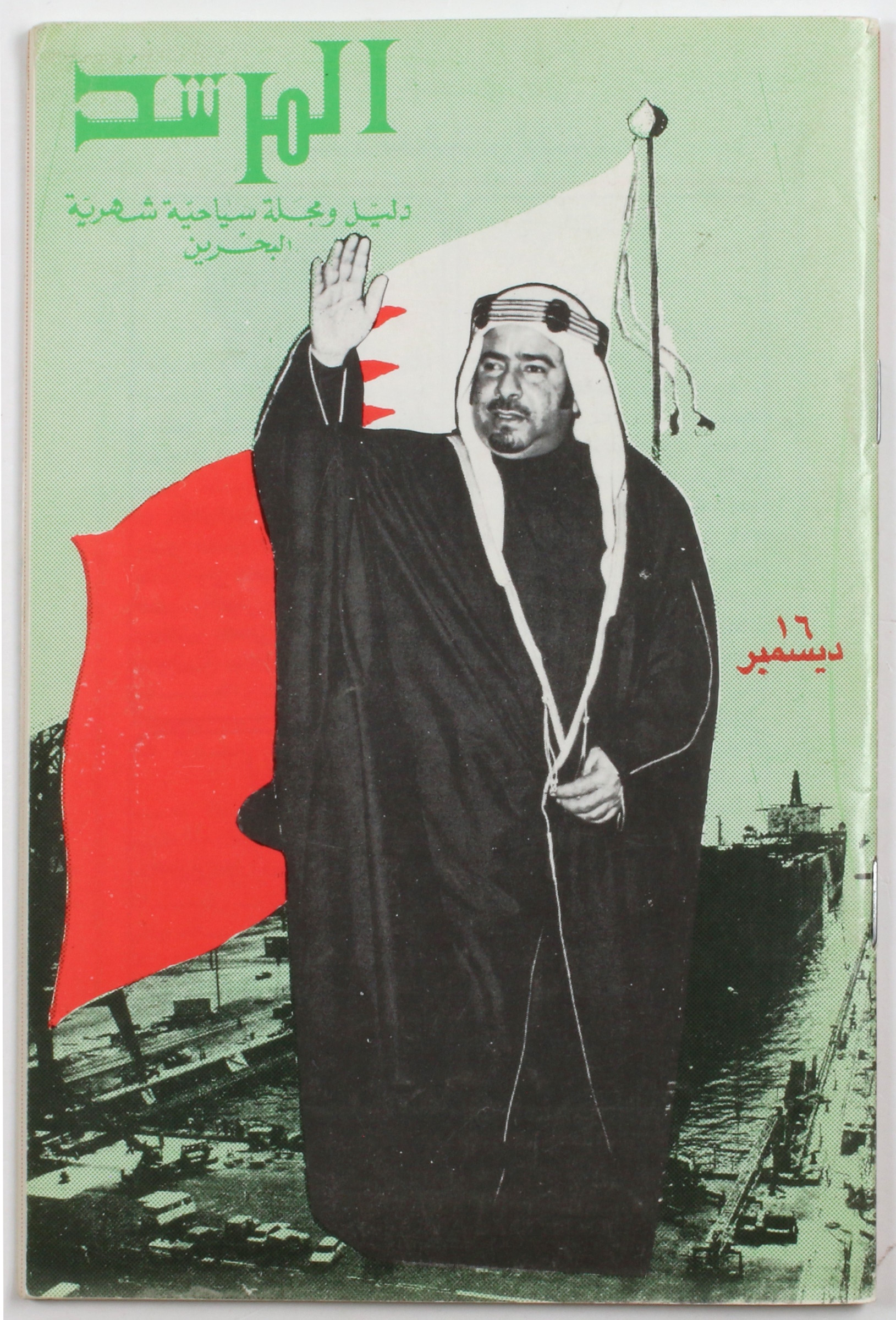
Unusual set of educational booklets intended for visitors to Bahrain. Official publications seek to boost the image of Bahrain as an island tourist destination that is compact, has short travel times, and provides an authentic Arab experience. The set comprises four richly illustrated introductory guidebooks, presenting the country's main features with regard to geography, economy, education, infrastructure and cultural life.
Further, two issues of Almorshid monthly touristic magazine with useful information on Bahrain passport and visa policy, lists of hotels, banks, hospitals, and embassies, alongside a few maps of Bahrain and city plans of Manama.
Also, a report of the Arab Shipbuilding and Repair Yard Company prepared on the occasion of the inauguration of the Asry Drydock on 15 December 1977, illustrated with several impressive aerial photographs showing the dock under construction (a special supplement to OAPEC News Bulletin, vol. 3, no. 12).
Finally, a small pamphlet of main air routes from Bahrain, Kuwait, Aden, Asmara, Abadan, Tehran and Basra, prepared by A. H. Fuller in London, advertises convenient travel between Europe and the Gulf.
Slight edgewear.

A magnificent example of one of the largest and most beautiful world atlases of the 17th century, obviously produced as a presentation copy: the Wardington copy, in particularly fine hand colour. In many cases, the meticulously impressed hand-coloured maps appear to have their titles in proof state or even in manuscript, indicating that this was one of the earliest copies of this work produced by Mortier, perhaps even "Mortier’s first or proof copy" (Wardington Catalogue). There are often faint lines visible which have been used to justify the letters, suggesting the type was just being set, or the cartouche lettering was being drawn up by a calligrapher.
In 1690, the Amsterdam publisher Pieter Mortier obtained from French publishers the privilege to distribute their maps and atlases in Holland. He began re-engraving maps by the French Royal Geographer Alexis Hubert Jaillot (ca. 1632-1712), the partner and successor of the "Father of French cartography", Nicolas Sanson (1600-67). Beginning in 1669, Jaillot re-engraved and re-published Sanson's maps, issuing them individually and in atlases. As the world atlas passed down from Sanson to Jaillot to Mortier, it became more striking and more renowned, partly because of its augmented size, its more creative embellishments, and its higher quality paper.
The contemporary binding here is by the Double Drawer Handle Bindery, a workshop Mortier commissioned to produce bindings for some of his most important works, including his Great Bible. Jan Storm van Leeuwen suggests that Mortier may have had the "Atlas holding up the world" block tool "made especially for this project"; he records at least two other copies of the work in marbled calf bindings with this design. Given the early state of the engravings, manuscript lettering on some cartouches, lovely hand colouring, and special binding, it is possible that this copy was a prototype or exemplar used by the publisher.

Promising the unnamed recipient that he will forward his "obliging letter" to his publishers: "Sir, i will forward your obliging letter to my publishers and they will attend to it". The letter can be dated with some certainty to Thorold Rogers' time as a member of parliament based on the stationery with the blindstamped seal of the "House of commons librairy".
Minimally stained.

Highly interesting letter to an unidentified recipient who appears to have served as an intermediary in a sale or an auction with which Humboldt was concerned. The sale might have been in connection with the death of Humboldt's former publisher John Hurford Stone (1763-1818). As early in 1812 Stone had to file for bankruptcy due to the enormous costs of the publication of Humboldt's monumental "Relation historique", the travelogue and scientific report of his Spanish American expedition. Stone's name is mentioned in a short postscript to the letter: "Everything from before the time of the contract with Vendryès is from M. Stone".
In the letter, Humboldt talks about the potential date of the sale and some objects that are in London: "Concerning the sale, Lannoy thinks that it could take place in the end of July and that the customs information will be sufficient to know what is in London. Since my intervention is only due to my personal interests and since only Mr. Lannoy needs to recognize what is necessary for the good of the creditors, I can only hope that the sale will be effected as quickly as possible. Please send me two lines as soon as your work is entirely finished so that we can meet at M. Lannoy's and arrive at a definite decision about the time of the sale and make the necessary announcements".
John Hurford Stone moved to France in 1792 and saw success as an industrialist. He had to leave France temporarily during the Reign of Terror in 1793/94; upon his return he started a successful publishing house. Following Stone's bankruptcy, the Parisian publisher R. Vendryès, mentioned twice in the letter, briefly took over Humboldt's great project. Vendryès only published the "Atlas gégraphique et historique" as part of to the "Relation historique". The first sentence of the letter probably refers to this publication: "My request with M. Maze was futile; he does not remember the posters published by Vendries [!] but he [Vendryès] could easily inform you about them". Nicolas Maze was the most successful publisher of the "Relation historique": between 1814 and 1826 he published several volumes of Humboldt's ultimately unfinished travelogue.
With collector's note in pencil. Well preserved.
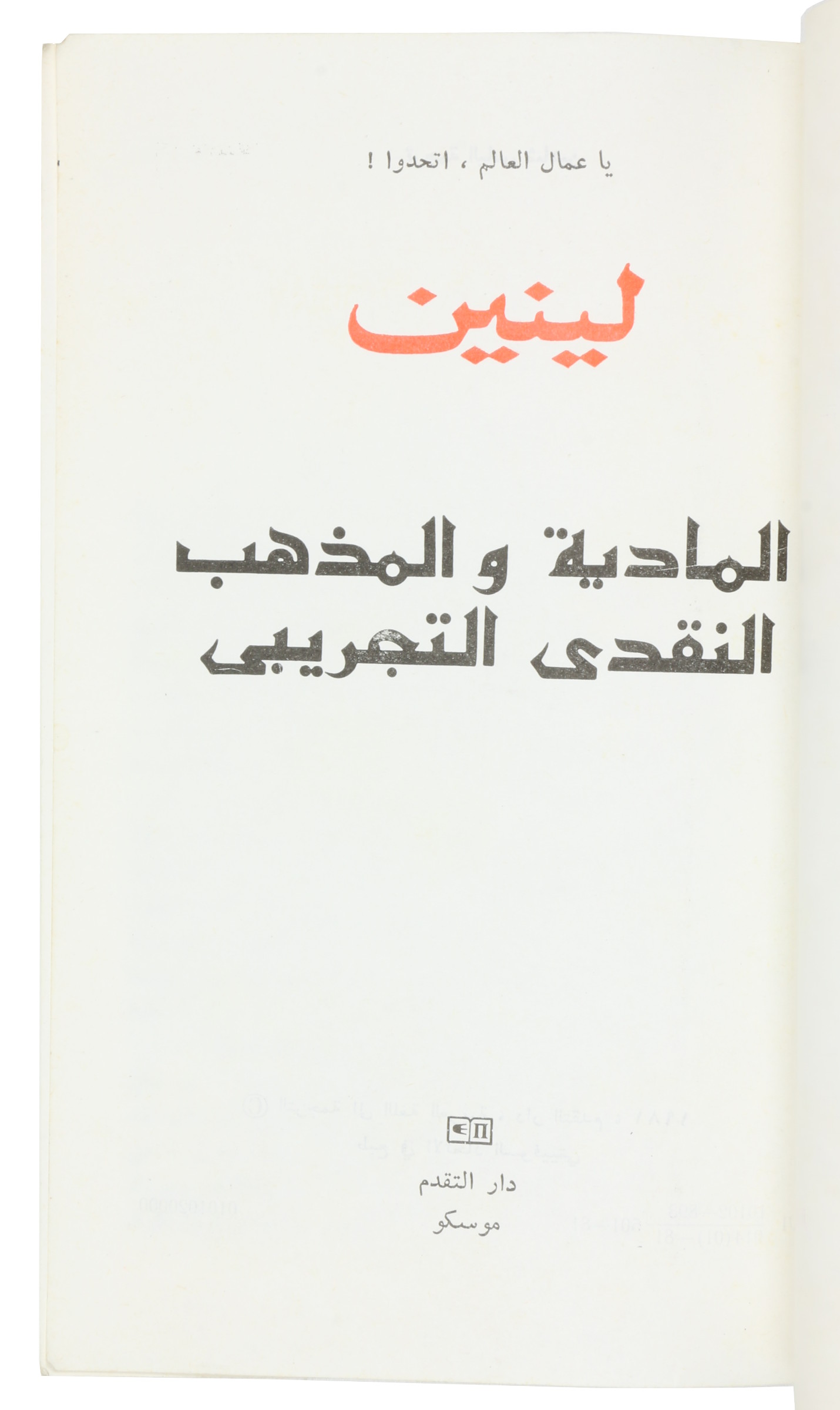
Second Arabic edition of "Materialism and Empirio-Criticism".
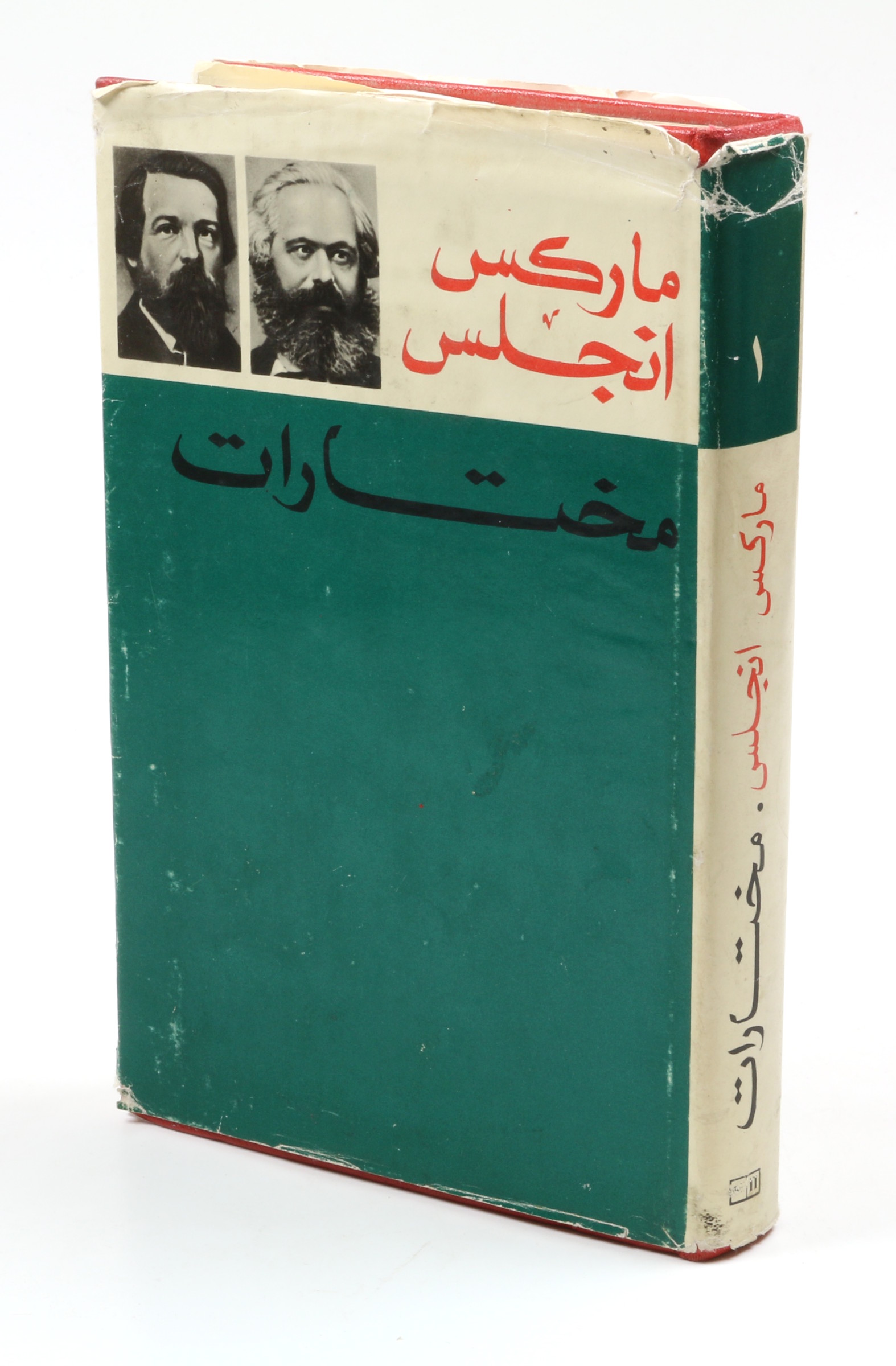
Selection of letters of Marx and Engels in Arabic. Progress Publishers was a Moscow-based Soviet publisher founded in 1931 and noted for its foreign-language editions of books on Marxism-Leninism.
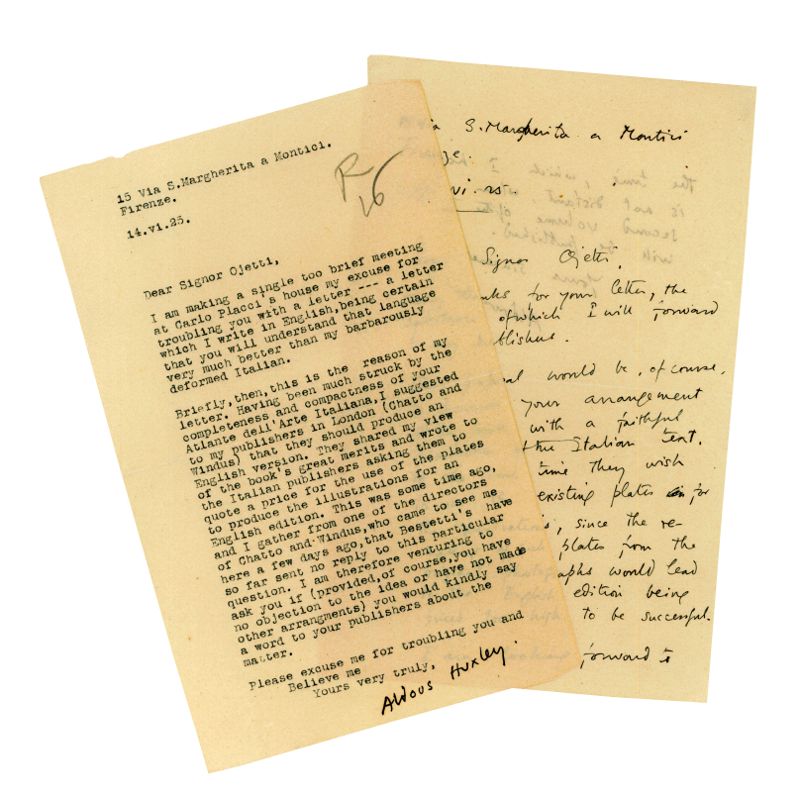
To the Italian writer and journalist Ugo Ojetti (1871-1946): "[...] Briefly, then, this is the reason of my letter. Having been much struck by the completeness, and compactness of your Atlante dell'Arte Italiana, I suggested to my publishers in London (Chatto and Windus) that they should produce an English version. They shared my view of the book's great merits and wrote to the Italian publishers asking them to quote a price for the use of the plates to produce the illustrations for an English edition [...]".
The second letter discusses further details.
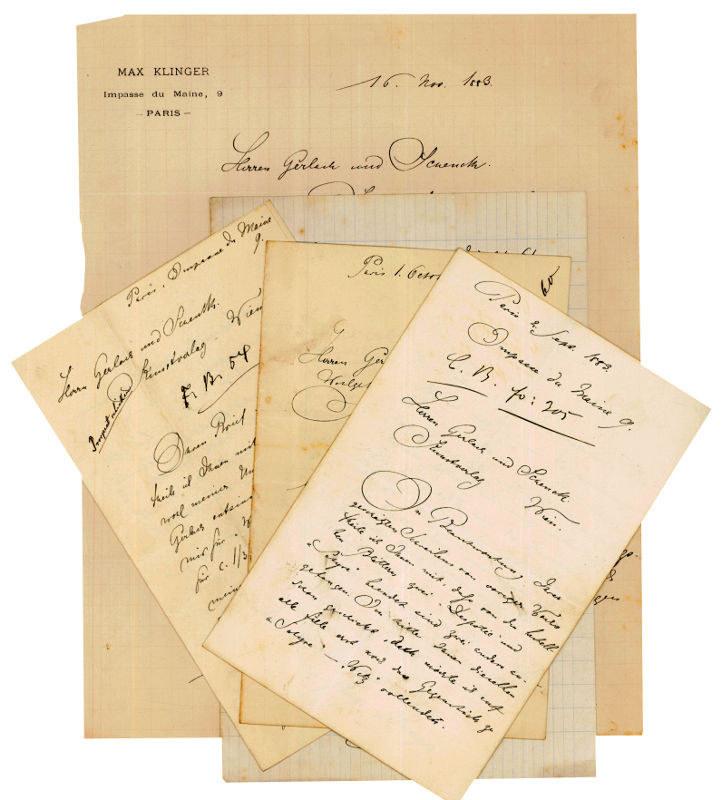
Correspondence with art publishers Gerlach & Schenk, Vienna, about the sale of several drawings and balancing accounts, preparing artwork for publication, the progress of his work, and about sending new prints.
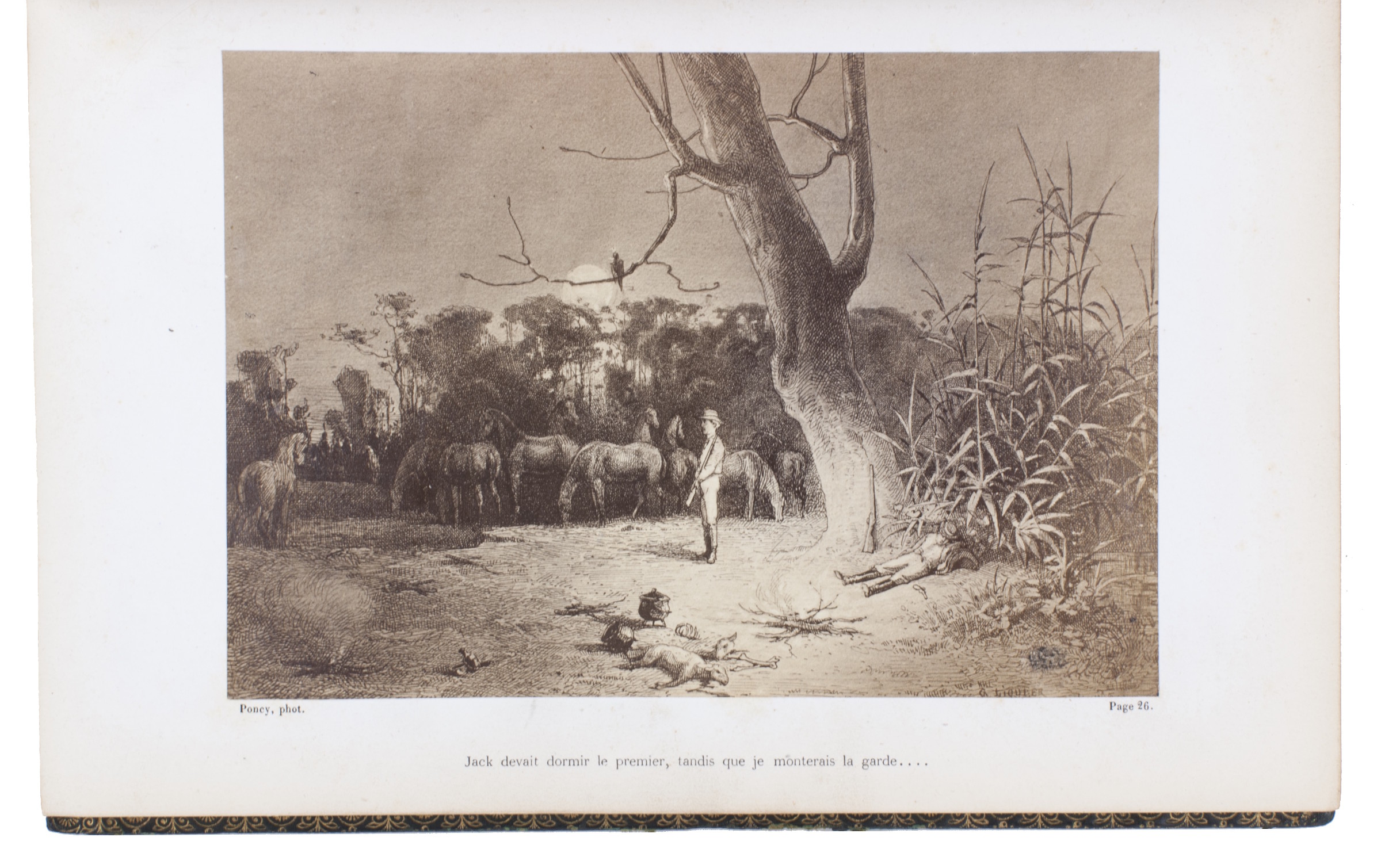
First edition. An unusual work illustrated with photographic illustrations by G. Liquier. In the 1860s photographic printing became cheaper and several publishers used the technique as an alternative to lithographic or woodcut illustration.

Ray Smith's personal copy of Dick Clark's American Bandstand, autographed and inscribed by over one hundred musicians, dancers, and radio personae, including Aretha Franklin, Jon Bon Jovi, Billy Joel, Cher, Carlos Santana, Elton John, Sting, and Dick Clark himself.
American Bandstand ran on American television from 1952 to 1989, and featured teenagers dancing to Top 40 hits; it was credited with bringing rock music to a wider American audience, and provided a platform by which many young musicians and dancers got their start in the industry; those featured in it appeared at one time or another on American Bandstand, starting with the earliest performers, who were largely just local teenagers in Philadelphia.
Autographs from early performers are featured as well, such as Jerry Lee Lewis (most famous today for "Great Balls of Fire") and Little Richard (of "awop bop a lu bop, alop bam boom!" fame). Moving into the music of the sixties, autographs feature Judy Collins, Diana Ross of The Supremes, several of the Beach Boys, and TV and film star Patty Duke. From the seventies are Donna Summer (known for the 17-minute "Love to Love You Baby"), and two actors from the Brady Bunch, who appeared on the Bandstand in 1972: Florence Henderson and Barry Williams. Representing the eighties are the likes of Cyndi Lauper (of "Girls Just Wanna Have Fun") and Gloria Estefan ("Conga"). Altogether, a tour de force of American music history. Because so many artists appeared on Bandstand early in their careers, a wide range of genres, into which they later branched, are represented in the autographs and inscriptions, from punk to rap to rockabilly.
In excellent condition.

Second edition; rare: not in Copac or OCLC. The first edition appeared in 1817. Also includes the coasts of Syria, Egypt, and North Africa (Tripoli, Tunis, Algiers). John William Norie (1772-1843) was one of the most important hydrographic publishers of his time.
Some dog-earing, but still a good copy.
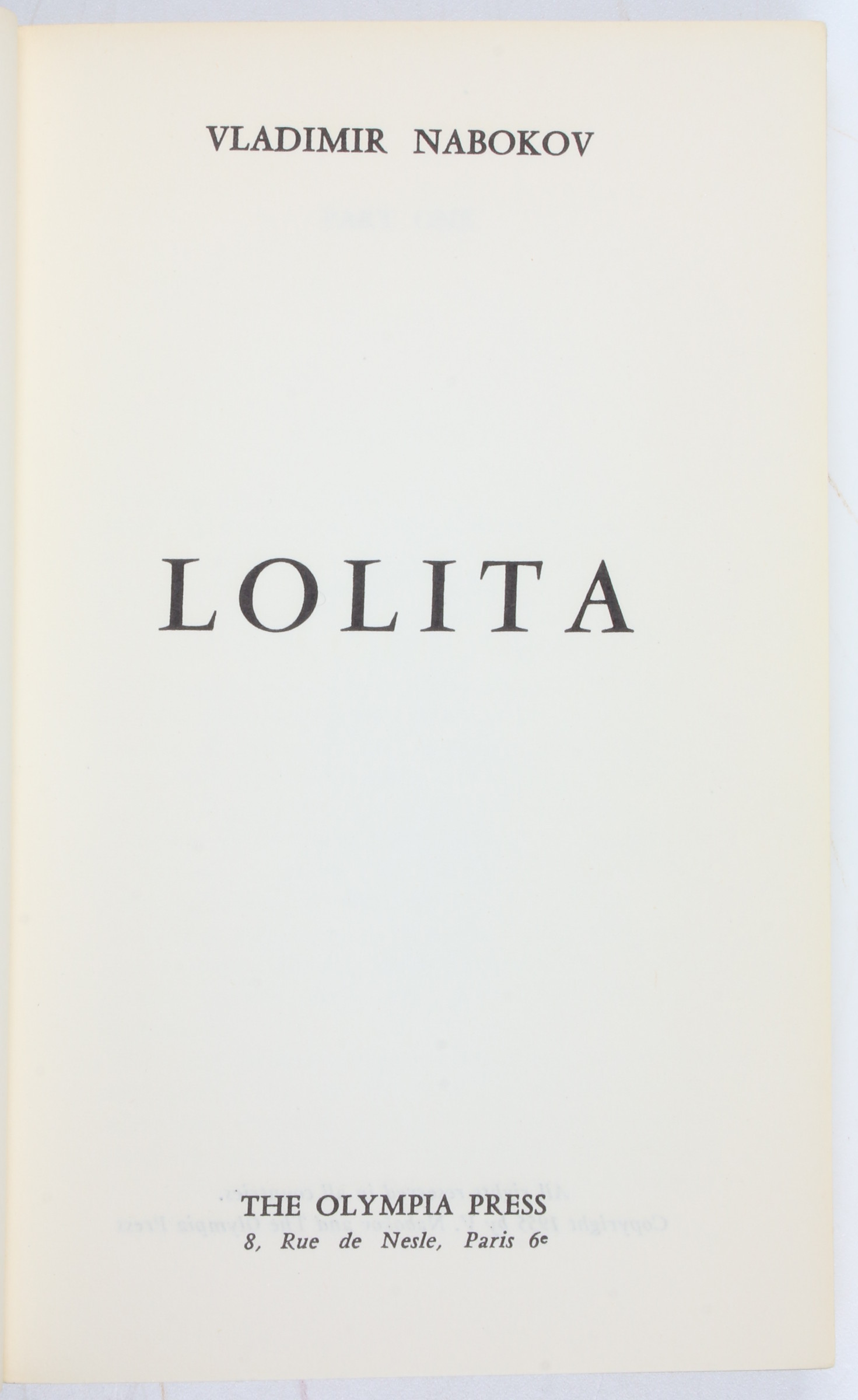
First edition, first issue, with the original price ("Francs: 900") printed on lower cover of each volume.
Nabokov's still-controversial masterpiece was initially rejected by several American and British publishers before being accepted by Maurice Girodias and his Paris-based Olympia Press. Upon publication, Nabokov defended his "serious work of art" to friends and publishers: "I know Lolita is my best book so far." The British Home Office ordered all copies entering the UK to be seized, and lobbied the French government so that, surprisingly, "Lolita" was also banned in France for nearly two years. "Lolita" was not published in the U.S. and the U.K. until 1959. The book is ranked fourth on the Modern Library's list of 100 Best Novels of the 20th Century.
Light wear to spines and extremities of jackets with upper cover of vol. 2 gently creased; white section of the spine of both volumes a little yellowed; page 63/64 shows minor loss to lower corner from imperfect opening. Still a very good set.
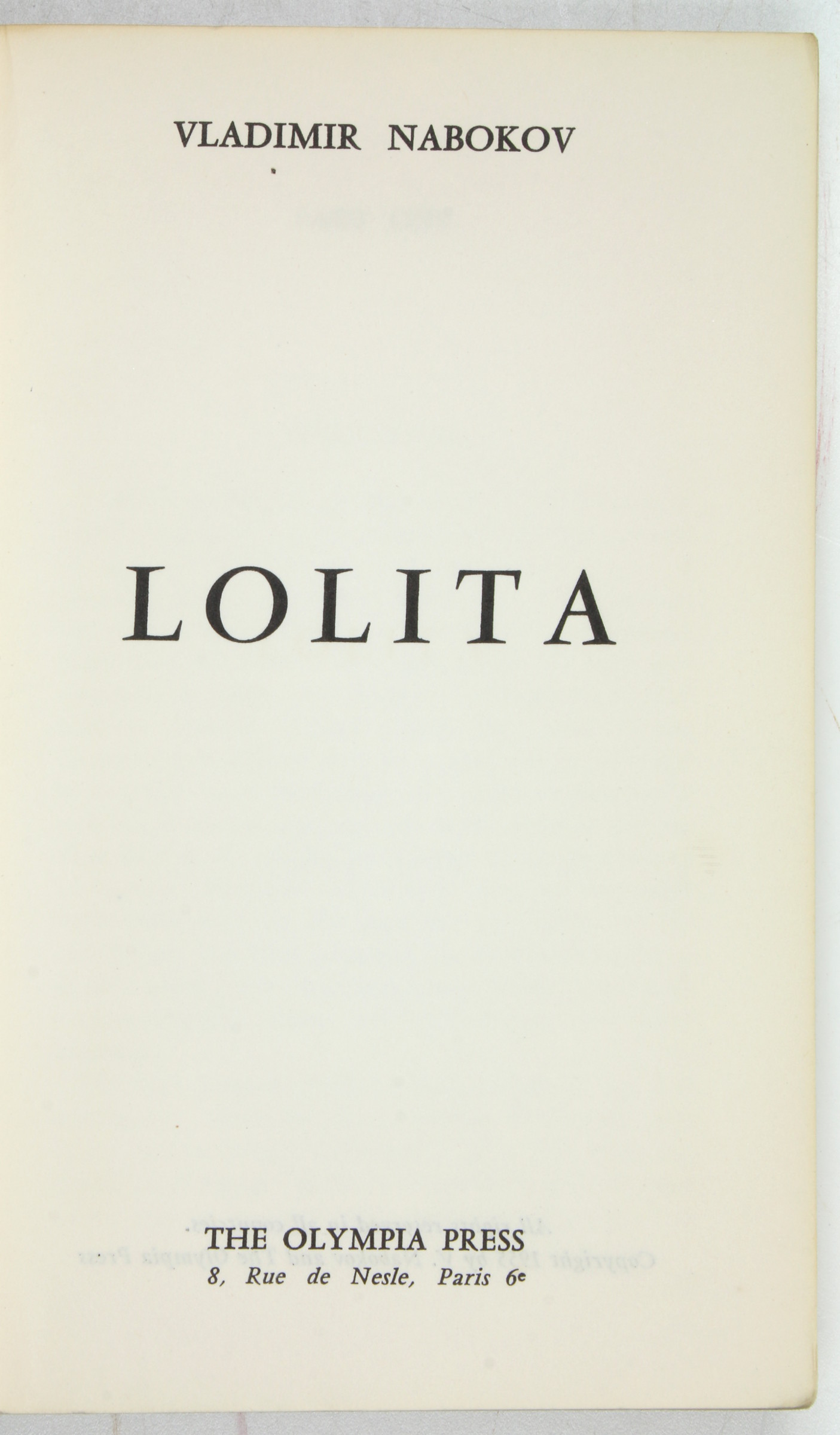
First edition, first issue, with the original price ("Francs: 900") printed on lower cover of each volume, without the later sticker.
Nabokov's still-controversial masterpiece was initially rejected by several American and British publishers before being accepted by Maurice Girodias and his Paris-based Olympia Press. Upon publication, Nabokov defended his "serious work of art" to friends and publishers: "I know Lolita is my best book so far." The British Home Office ordered all copies entering the UK to be seized, and lobbied the French government so that, surprisingly, "Lolita" was also banned in France for nearly two years. "Lolita" was not published in the U.S. and the U.K. until 1959. The book is ranked fourth on the Modern Library's list of 100 Best Novels of the 20th Century.
Light wear to extremities of jackets, white section of the spine of both volumes a little yellowed, still a very good set. Some sunning and a few small brownstains to spine of half-morocco cover.

Thanking the publishers Maurice Delamain and Jacques Boutelleau, better known as Jacques Chardonne, of Librairie Stock for sending him several books: "[L'Abbé A. Mugnier - Chanoine honoraire de Paris] remercie particulièrement M.M. Delamain et Boutelleau des livres si intéressantes qu'ils ont bien voulu lui adresser et les prie de croire à son humble et meilleure sympathie".
On engraved visiting card. Somewhat stained.
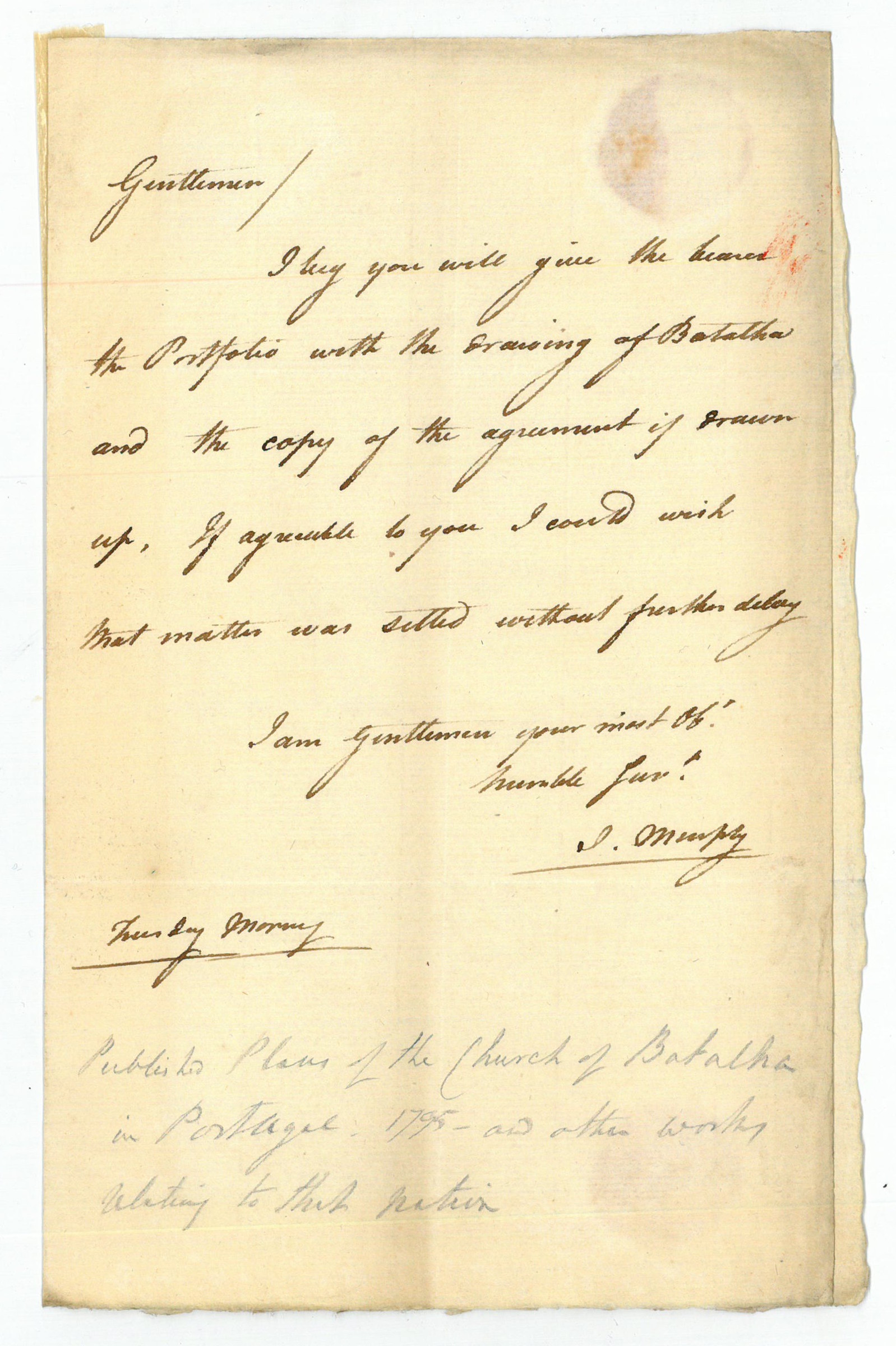
To publishers Cadell & Davies about his drawings of Batalha Monastery in Portugal, produced in 1795: "I beg you will give the bearer the Portfolio with the drawing of Batalha and the copy of the agreement if drawn up. If agreeable to you I could wish that matter was set[t]led without further delay [...].
A few biographical notes in a former collector's hand in pencil. A strip of old mounting tape on verso.

To the music publishers Liepmannssohn & Dufour in Paris: "[…] Je suis contrarié de ne pas avoir Frizzi (4173) que je cherche de puis longtemps et dont j'ai besoin pour les additions de ma Biographie des musiciens. Si vous pouviez obtenir de la personne à qui vous l'avez vendu de me la céder, vous me rendriez grand service […]".
On headed paper "Conservatoire royal de musique - Cabinet du Directeur".
















